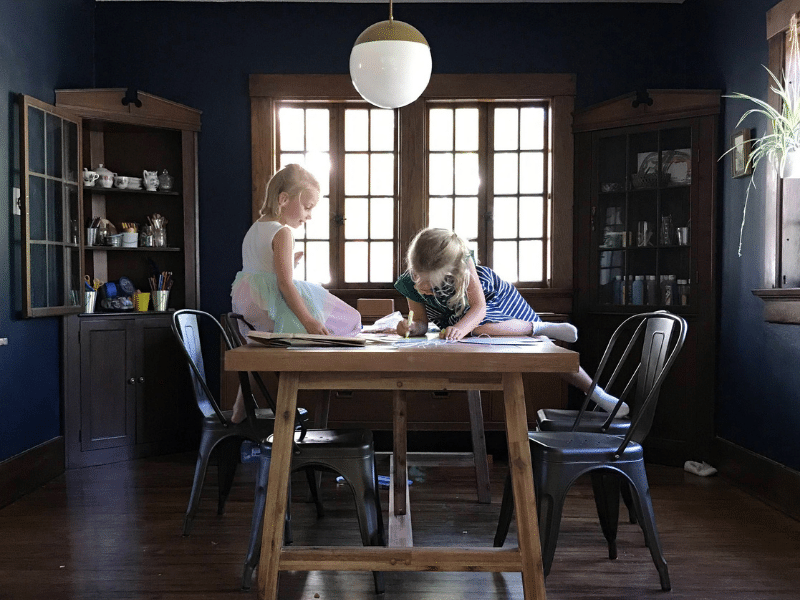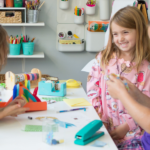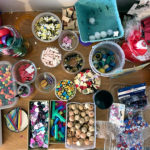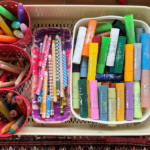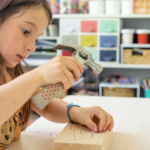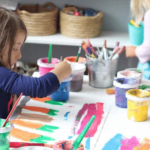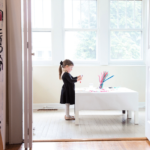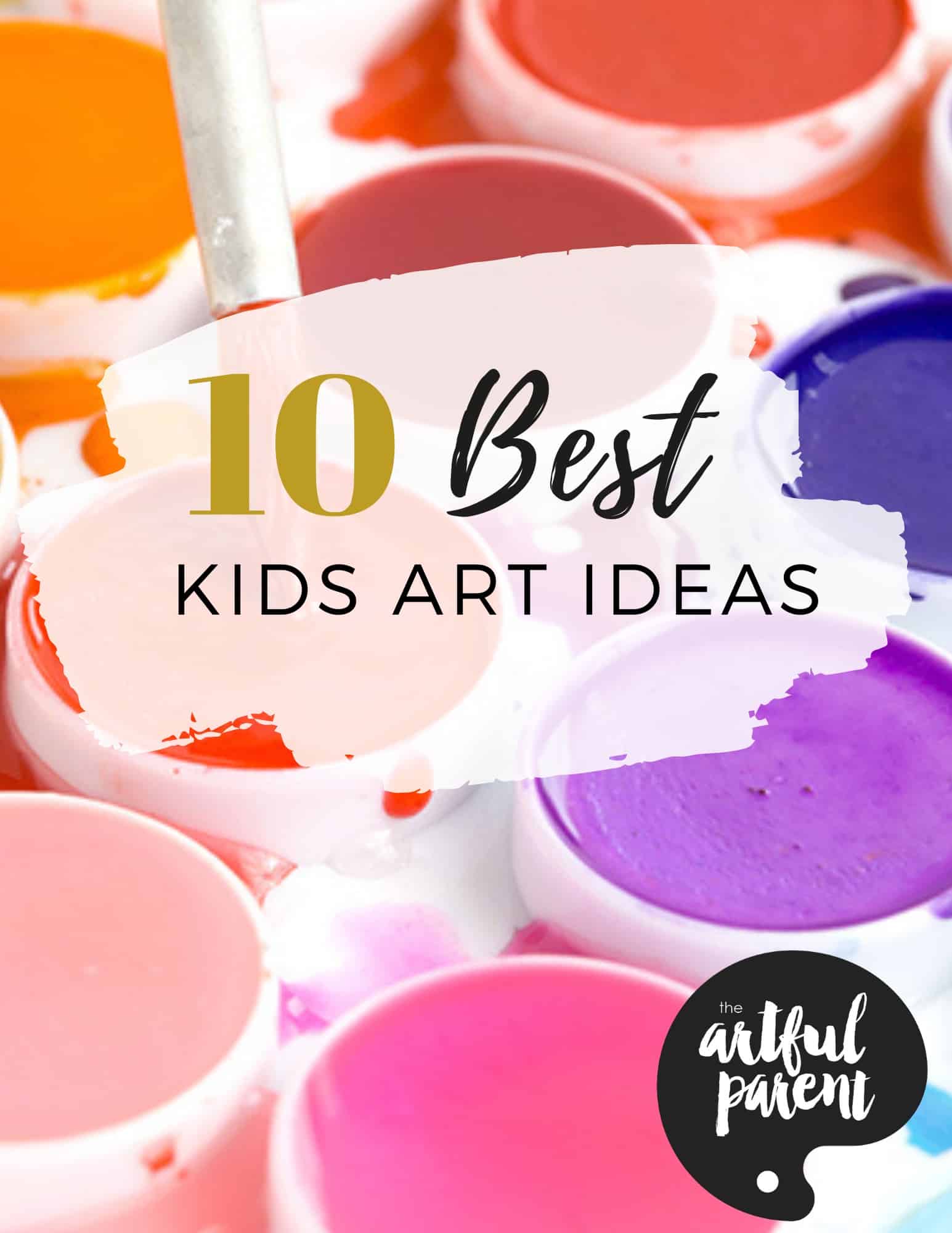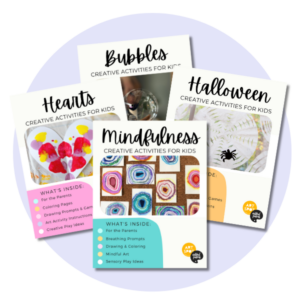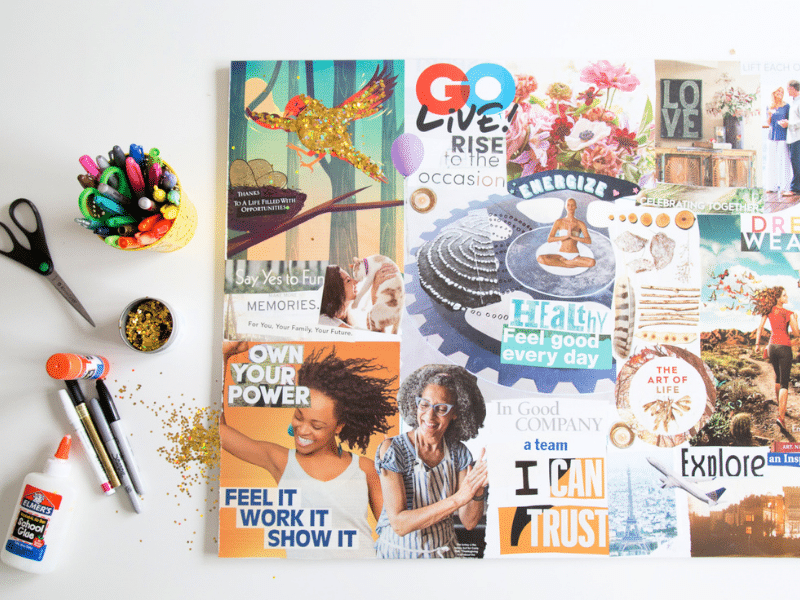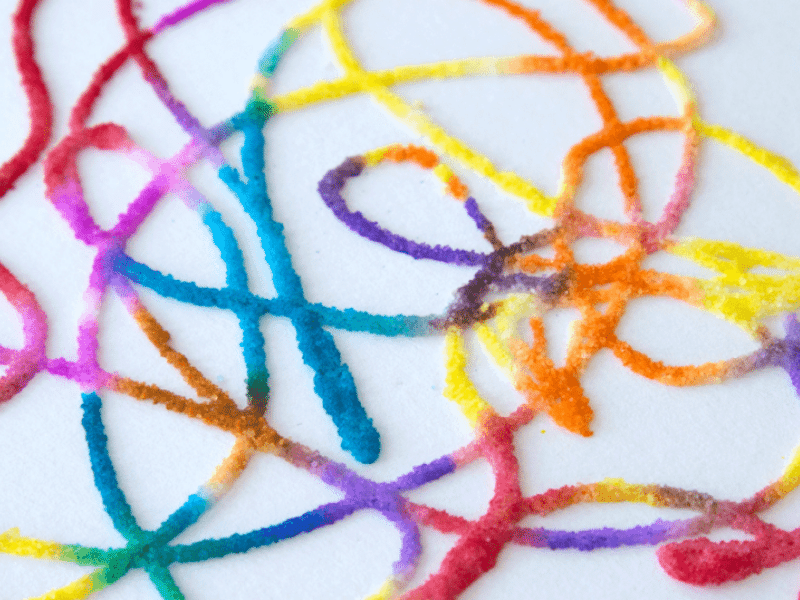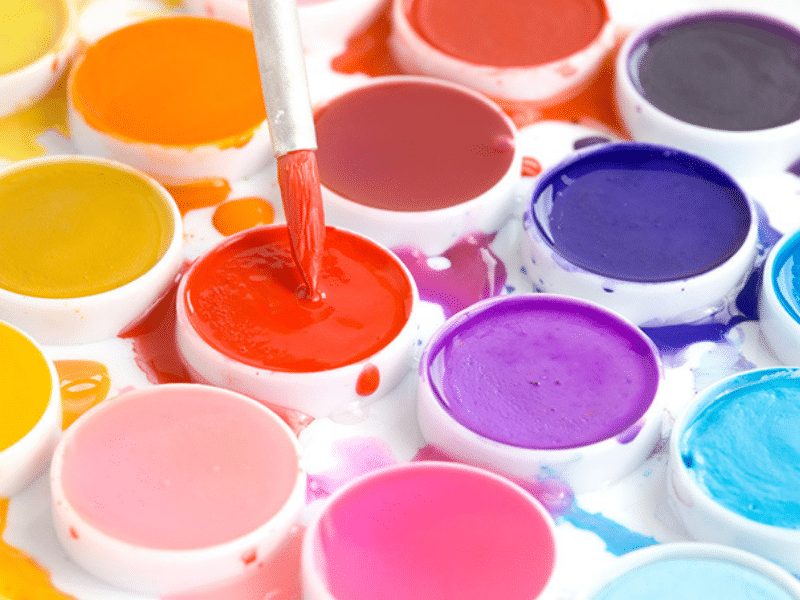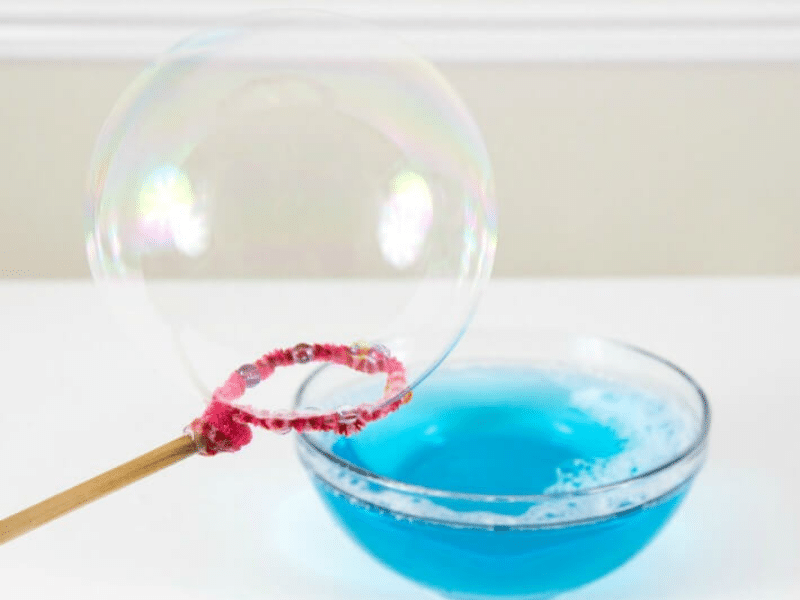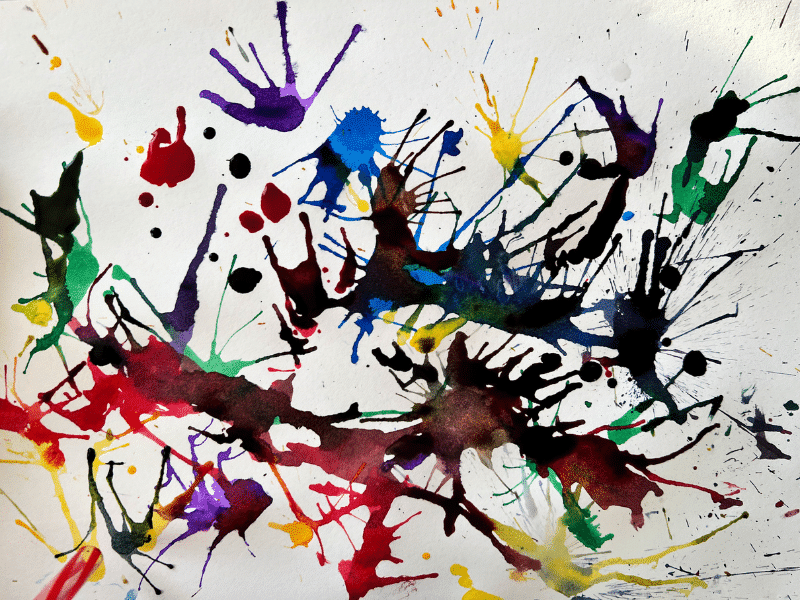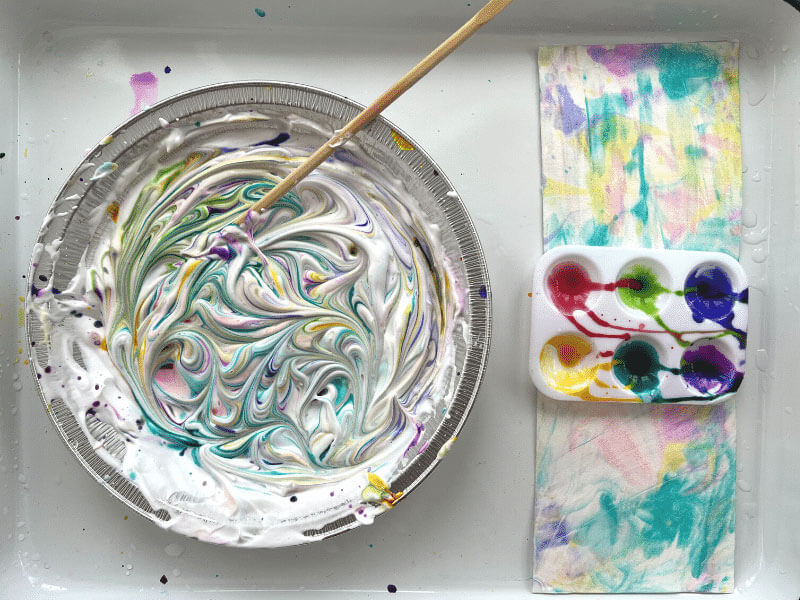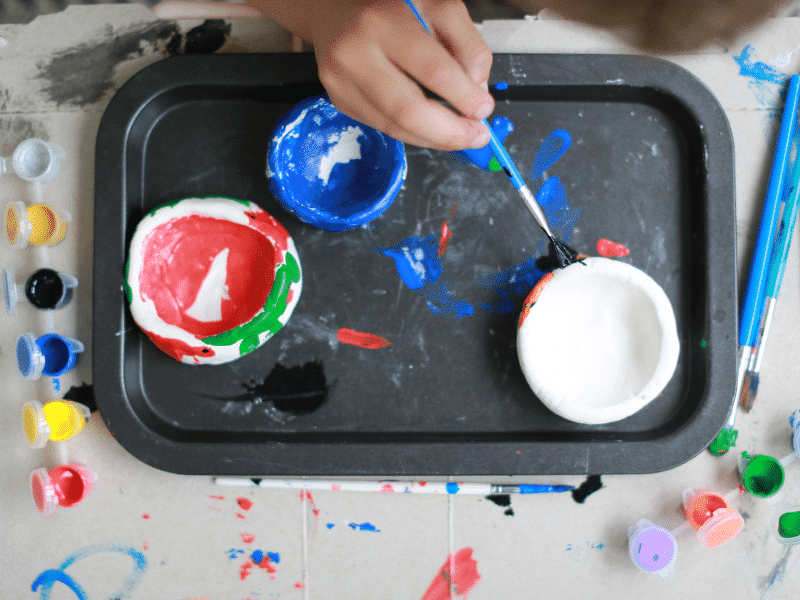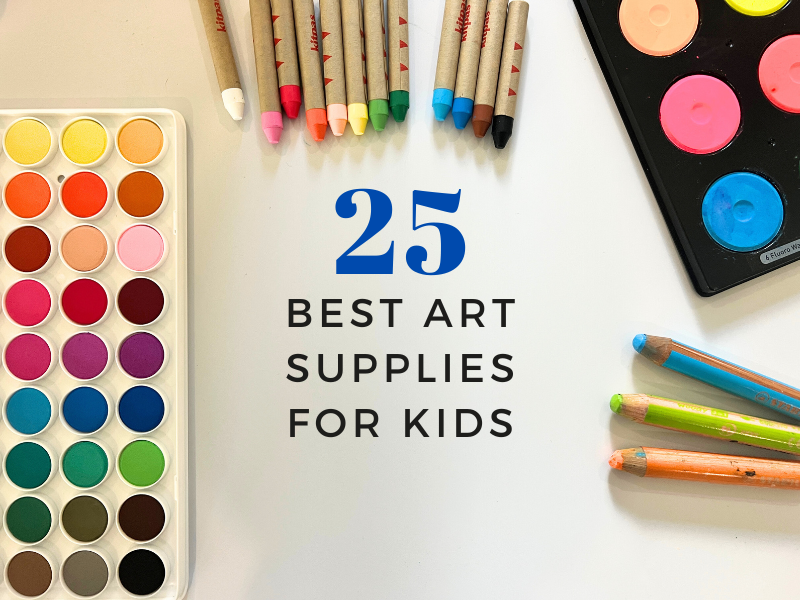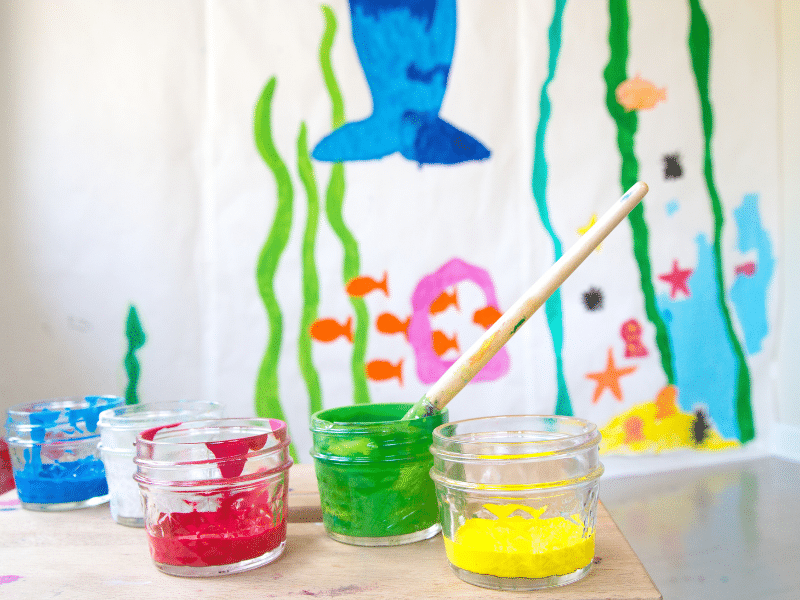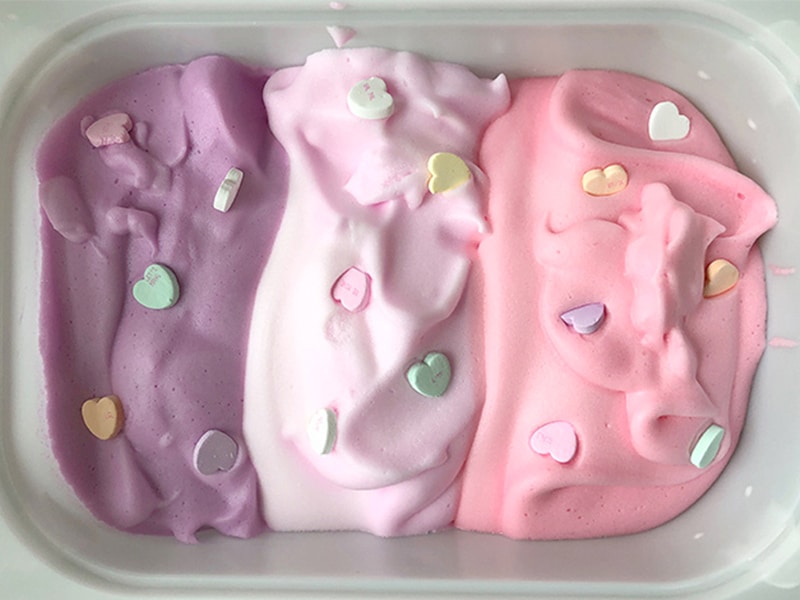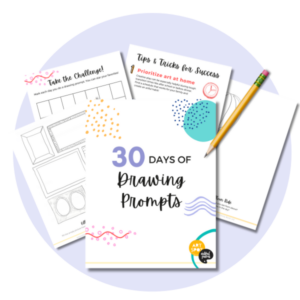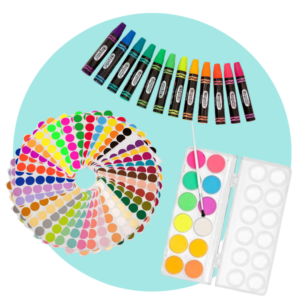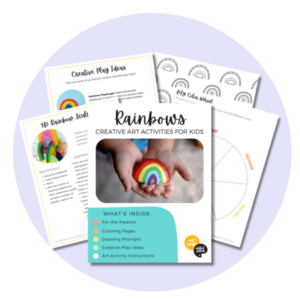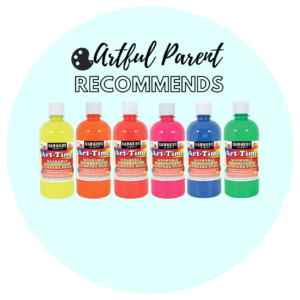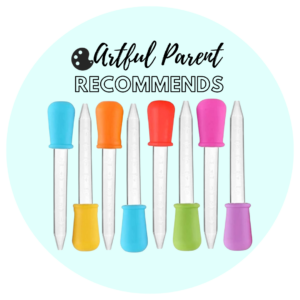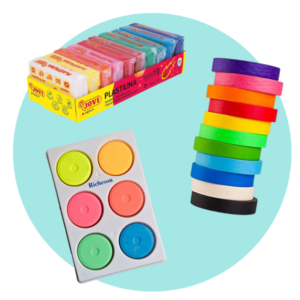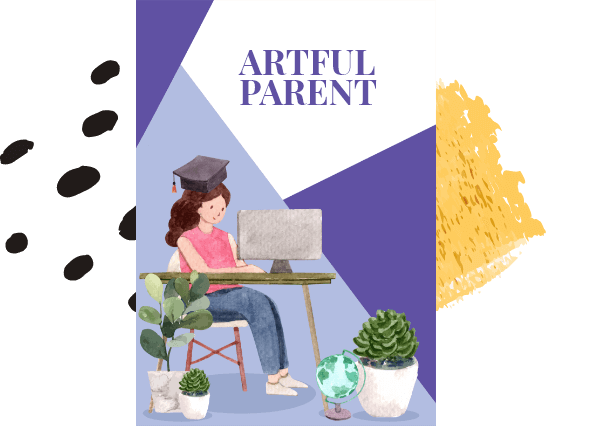Foster art and creativity with your children with these simple tips and easy ideas for art room set-up in your home.
Updated July 2023
In order to make art, kids have to have a space to do it, even if it’s at the kitchen table.
Dedicated art spaces for kids are great because they are available any time children feel the urge to create. They are stocked with inspiring art supplies and are places that kids can start a cardboard sculpture or a drawing of outer space and come back to work on it the next day if they want to.
Do your children have an art space like this?
If not, that’s okay! Here are some tips for setting up or updating one.
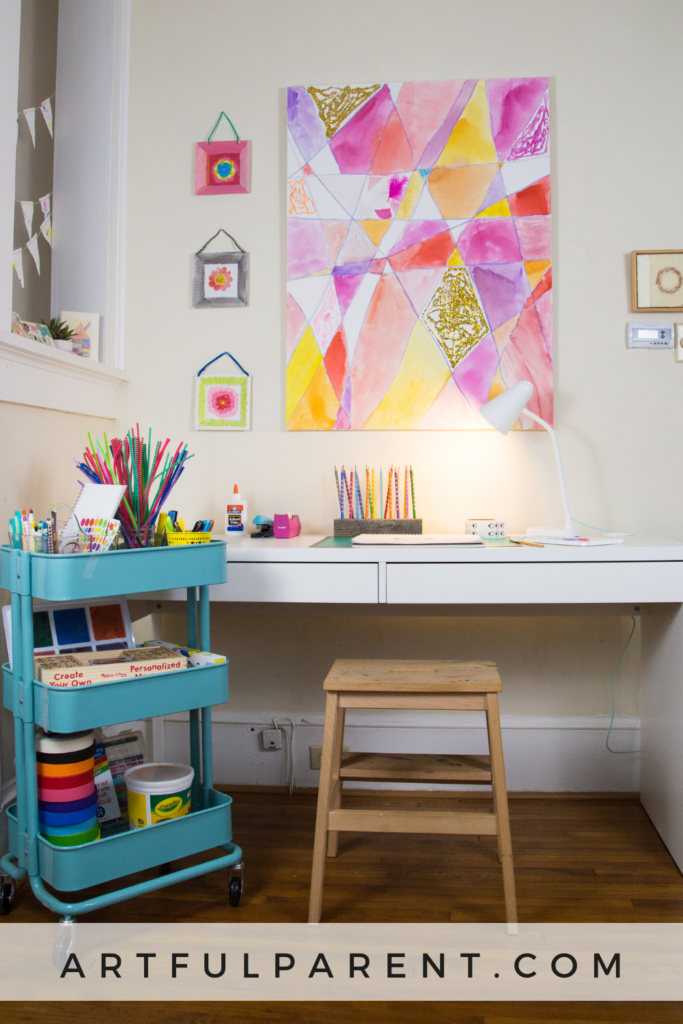
Ideas for an Art Room for Kids
1. Set Up an Art Desk
Equip it with paper and drawing materials, adding other materials and tools as appropriate. A nearby shelf or drawer can hold more art supplies.
Further Reading: How to Stock a Children’s Art Desk
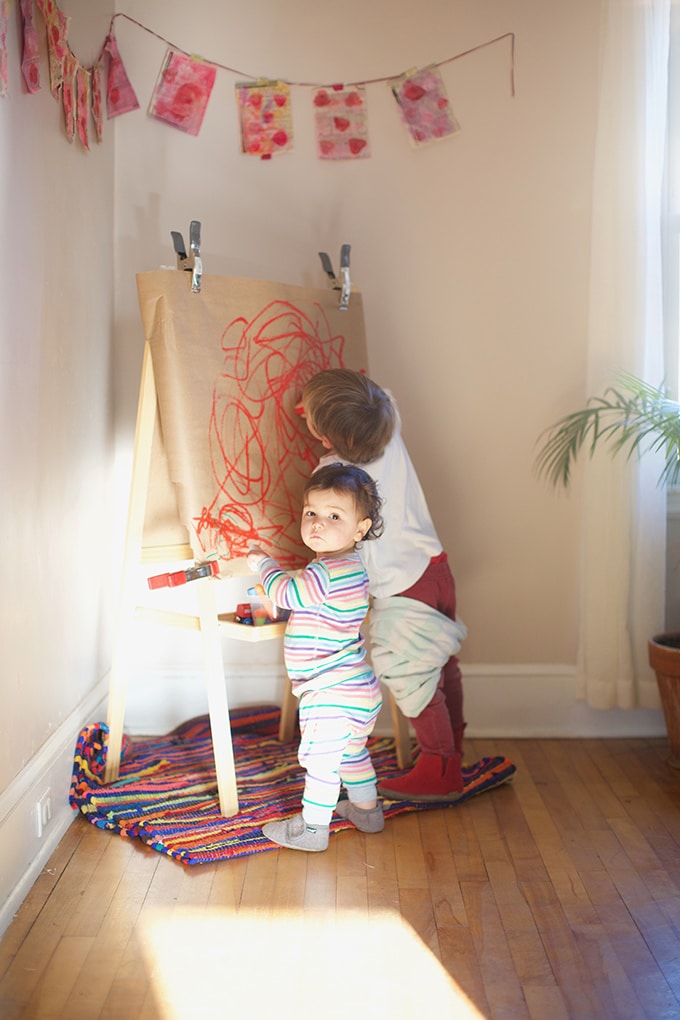
2. Use an Easel for Kids Art
Young children work best standing up. A wall-mount easel is one way to give them the opportunity to create this way, a table-top easel is another, and a free-standing children’s art easel is a third.
You can leave an easel set up with paper and drawing or painting materials. If the reverse has a chalkboard, equip it with chalk.
Four Ways to Make Standing Art Spaces for Kids

- A traditional easel is wonderful and can be an art space in itself. We have used this Melissa and Doug adjustable easel for years and love it.
- Buy or create a wall-mount easel, which is a big space saver.
- Buy or make a wall-mount chalkboard.
- Or make your own cardboard easel to set atop a table, as Bar Rucci of Art Bar Blog did for her students.
If you use an easel, remember to change it up so it doesn’t just become a piece of furniture (and thus ignored).
Further Reading: 6 Ways to Encourage Continued Interest in Your Children’s Easel
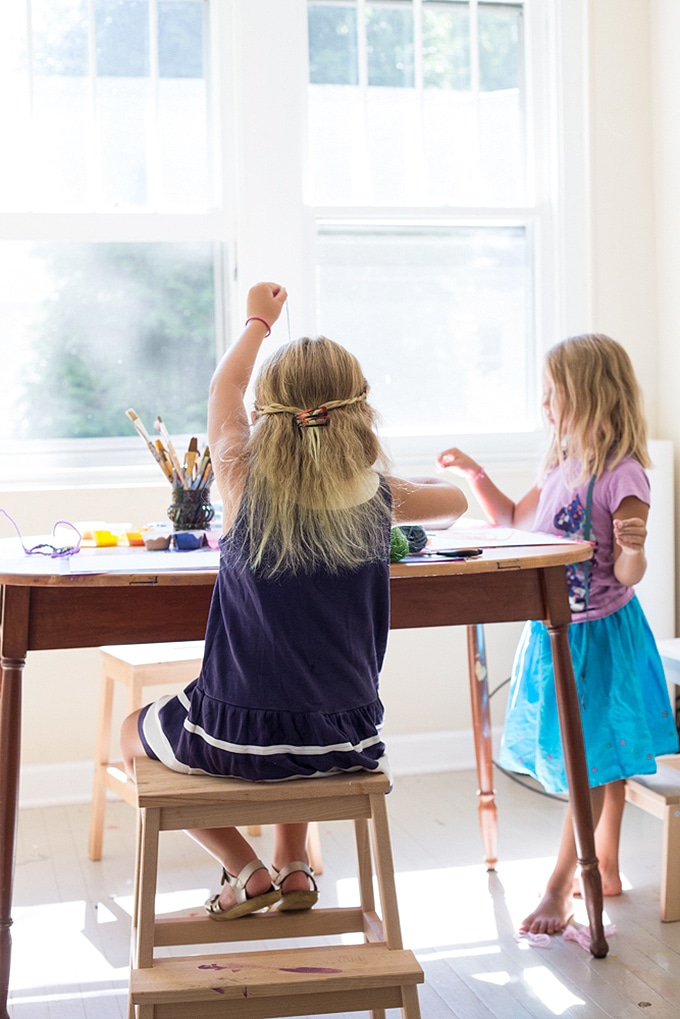
3. Make Space for Painting
Having a space for painting is great. But if a dedicated painting space is out of the question, consider setting up painting activities periodically.
Use a space that you don’t mind getting messy or that is easily washable (such as the kitchen, utility room, porch, garage, or basement). Or simply take the painting activity outside if weather permits.
Spread a drop cloth or newspapers to catch the paint drips if you like. You can leave out paper, paint, and brushes or, if your child is very young, leave the painting space set up and just bring out the paint itself when your child is ready to paint.
Further Reading: Finding a space for messy art
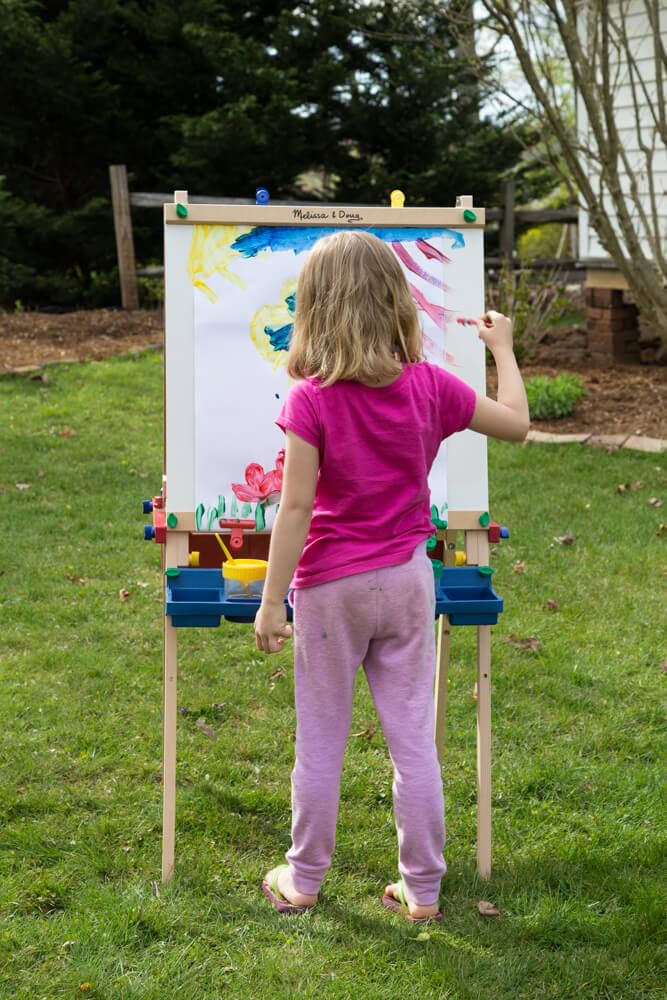
4. Take the Art Outdoors
Consider using the outdoors as an art space, especially in the warm weather months. You can set up an easel outside or bring out a table and chair. The bonus with being outside is that you’ll be less concerned about the mess factor.
Further Reading: 21 Outdoor Art Ideas for Kids
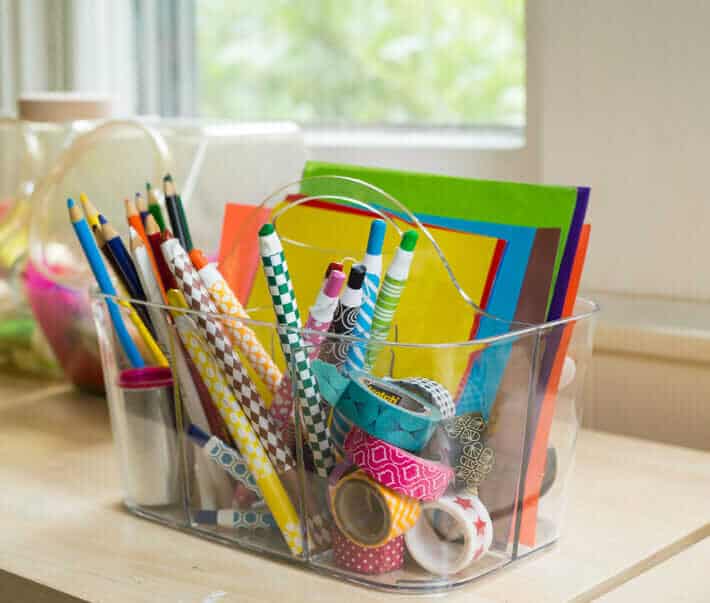
5. Use a Portable Art Caddy
Stock an art caddy, box, basket, or art cart with a pad of paper, some drawing materials, stickers, etc. Keep the caddy within reach so your child can grab it and work whenever and wherever – whether at the kitchen table, the floor, or in the car.
Further Reading: How to Set Up a Kids’ Art Caddy and How to Set Up an Art Cart
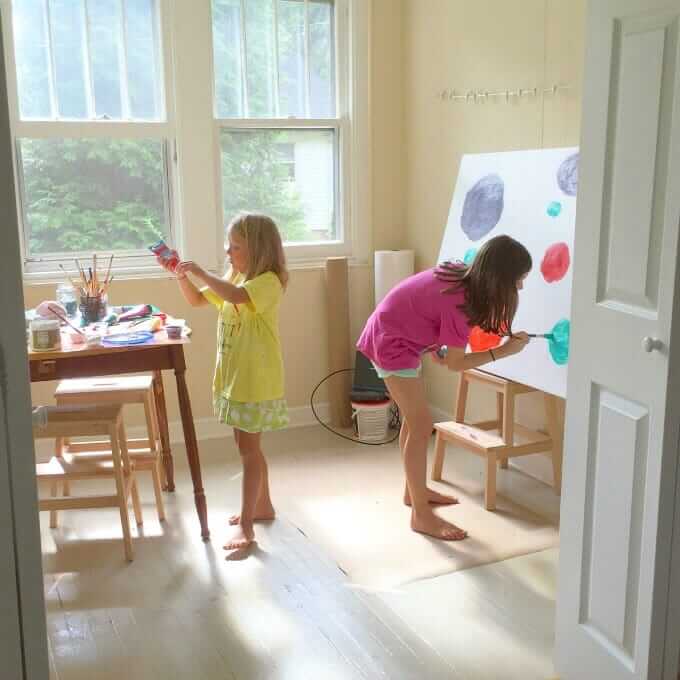
6. Set Up a Kids Art Room
I know that I’m lucky to have a kids art room dedicated to art, even in a smaller home. If you do have an extra room, consider making it a space for art, crafts, creativity, learning, and exploring.
Megan of The Art Pantry turned her enclosed front porch into an amazing art space for her kids. Think outside the box on this one!
And an art room also makes a great play room because having a kids art space isn’t only about art.
It’s wonderful to be able to leave out an art project that is in progress, to have a space that is okay for getting messy, to be surrounded by art materials, and to have a place for drying and displaying art.
Further Reading: How to Set Up a Kids Art Space That Builds Creative Confidence and Independence
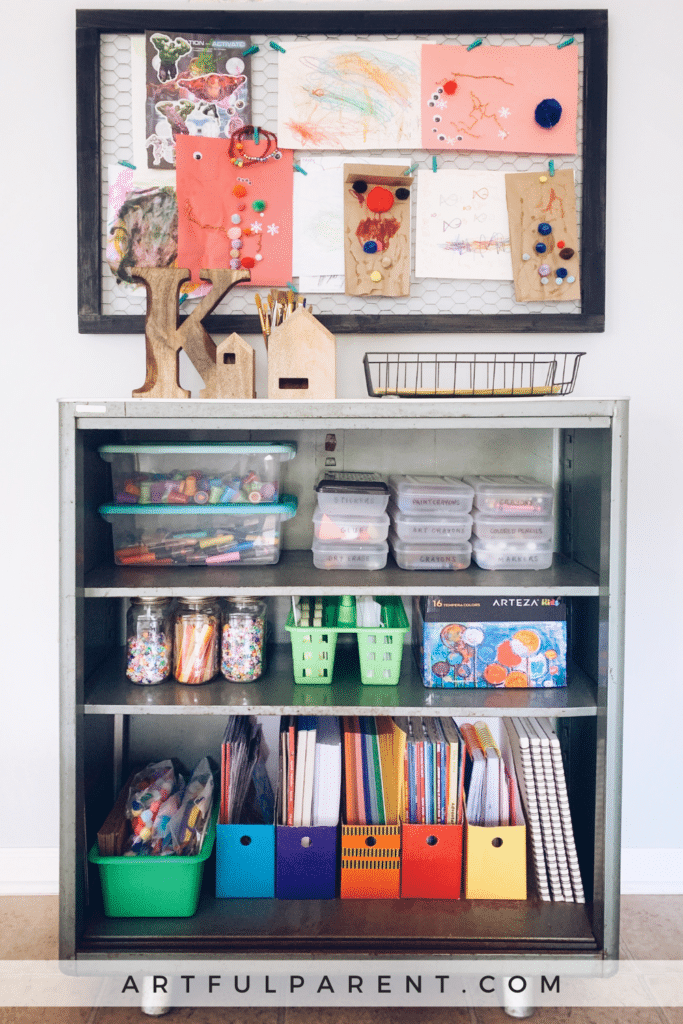
Organize Art Supplies
The art materials you choose for your child’s art space with will depend on age, developmental stage, personality, preferences, and your own comfort level.
For example, for a one or two year old you might place out paper, crayons, markers, stickers, and chalk for them to use whenever they like.
For toddlers, you might place glue, paints, and some collage materials (especially potential choking hazards) high up to be used only under closer supervision.
As your child gets older, you’ll place more and more within reach to be used freely and he will become more involved in choosing his own preferred art materials.
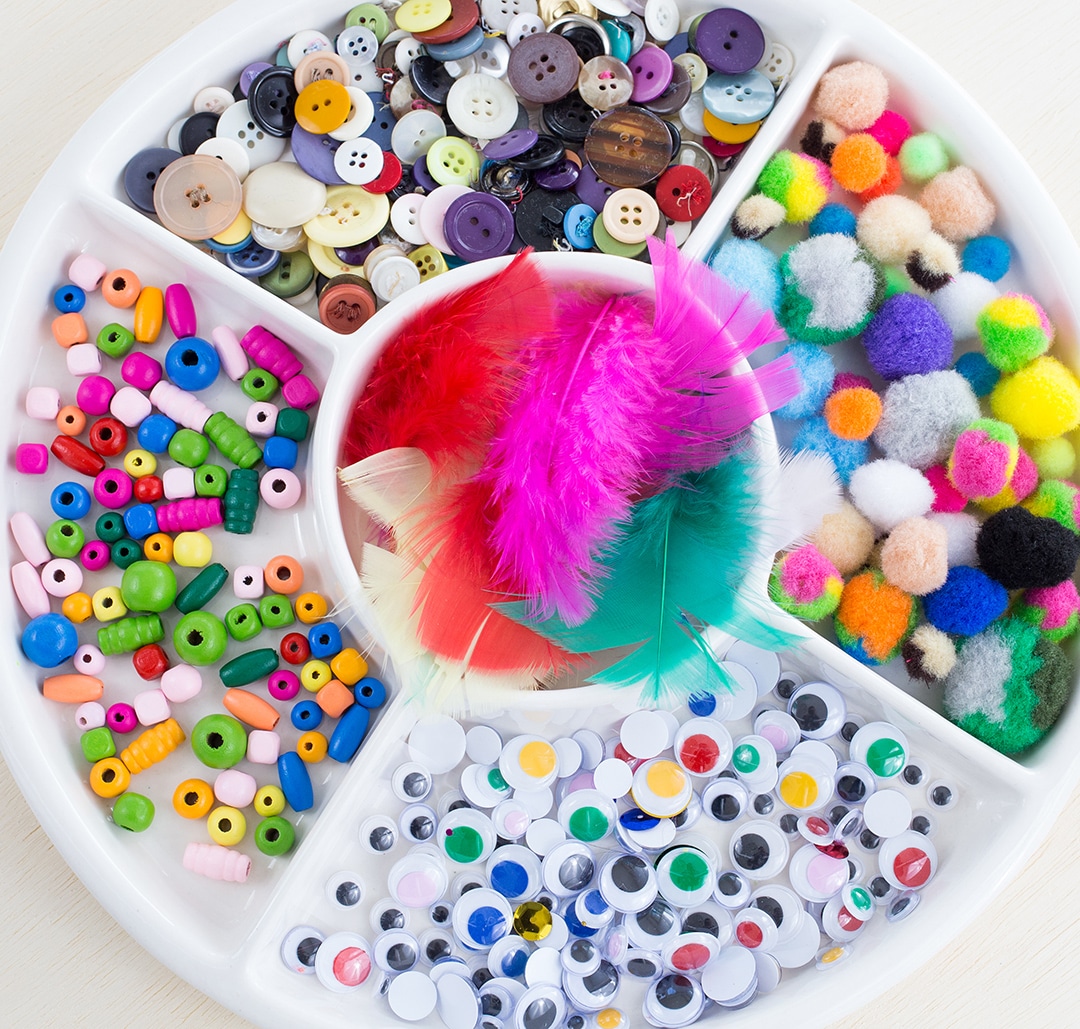
Kids Art Supplies
We suggest leaving just a few materials out at a time on the workspace and possibly a few more accessible nearby. A few well-curated art materials inspire creativity and artmaking.
Pick a few of these at a time to leave out, and rotate things between the art space and a storage cupboard, for example.

- Drawing materials (crayons, markers, colored pencils, oil pastels)
- Painting materials (tempera paint, watercolor palette, liquid watercolors, finger paint)
- Collage materials (geometric stickers, buttons, colored tissue paper, scrap paper, pasta, googly eyes, feathers, washi tape)
- Printmaking materials (stamps and ink pad, water based ink, brayer)
- Sculpture materials (wood craft sticks, toothpicks, pipe cleaners, wood scraps)
- Modeling materials (playdough, clay, modeling tools, rolling pin, cookie cutters)
- Tools for art (scissors, tape, colored masking tape, glue, paint brushes)
Further Reading: The 25 BEST Kids Art Supplies and The Best Tools & Art Supplies for Kids
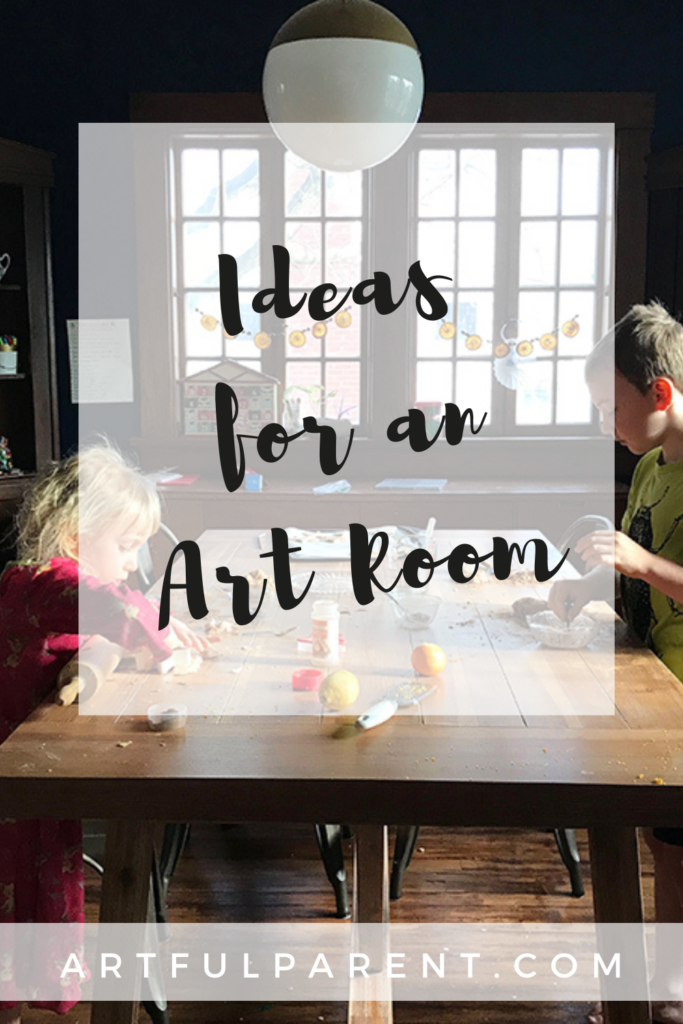
Your kids are constantly changing and growing as are their interests. You can always incorporate new interests (if your child is into space, set up art activities and materials incorporating that theme) and add new art materials.
By making sure your art space evolves with your kids, you will help ensure a continued interest in making art and exploring the world in creative ways.
More Art Room Ideas & Resources
- 6 Ideas for a Home Art Space for Children
- How to Set Up A Kids Art Cart
- How to Create a Kids Art Space That Will Actually Get Used
- Why Having An Art Space Isn’t Just About Art
- How To Set Up A Kids Art Space That Builds Creative Confidence & Independence
- The Art of Strewing for Kids
Pin It for Later
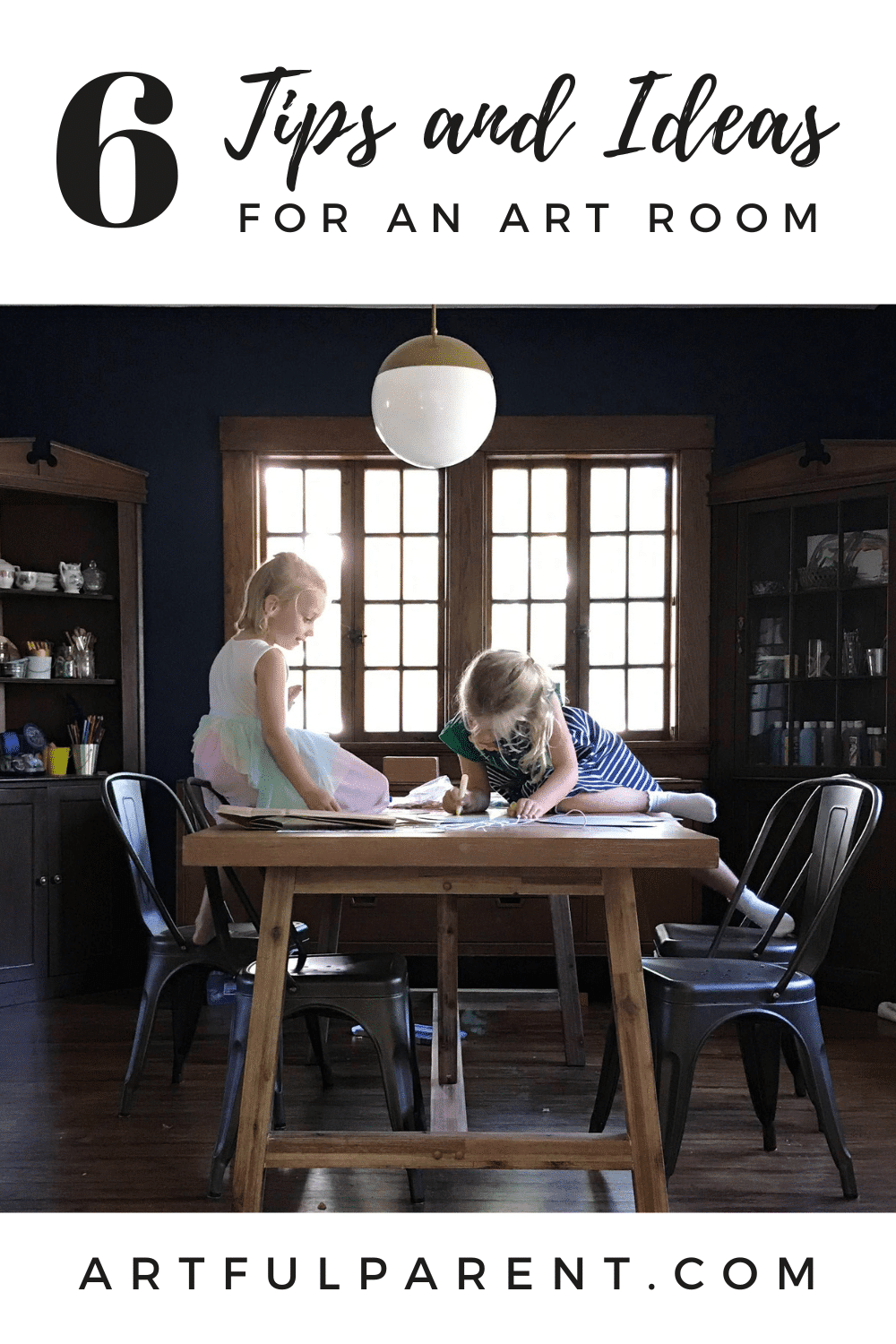



Related Posts
-
Art Supplies Storage Ideas for Kids
Create an art room with art supplies storage ideas for kids using Megan Schiller's ebook…
-
How to Organize Art Supplies for Kids
Learn ways to declutter, organize art supplies in simple ways to encourage continued use. Our…
-
How to Set up an Art Cart
Learn how to set up an art cart for kids in a few easy steps.…
-
Why a Kids Art Room Isn’t Just About Art
Creating a kids art room can be about so much more than just art. Guest…
-
Set Up an Art Room for Kids That Builds Creative Confidence
Megan Schiller, from the Art Pantry, shares how to set up an art room for…
-
Create a Kids Craft Room that Gets Used!
Create a kids craft room that will get used. Learn how to choose a location,…

